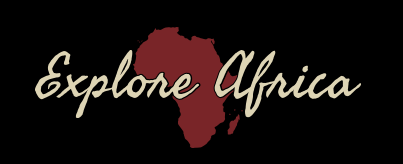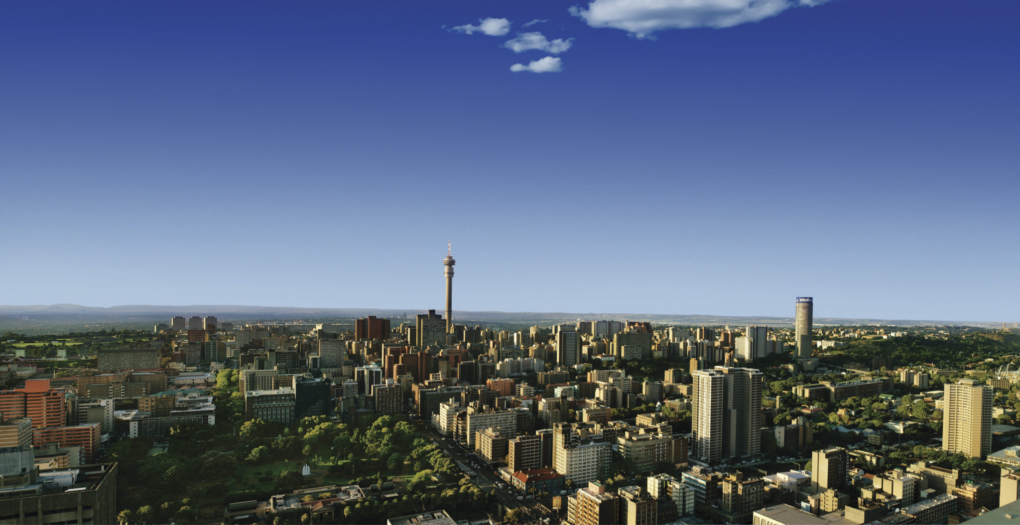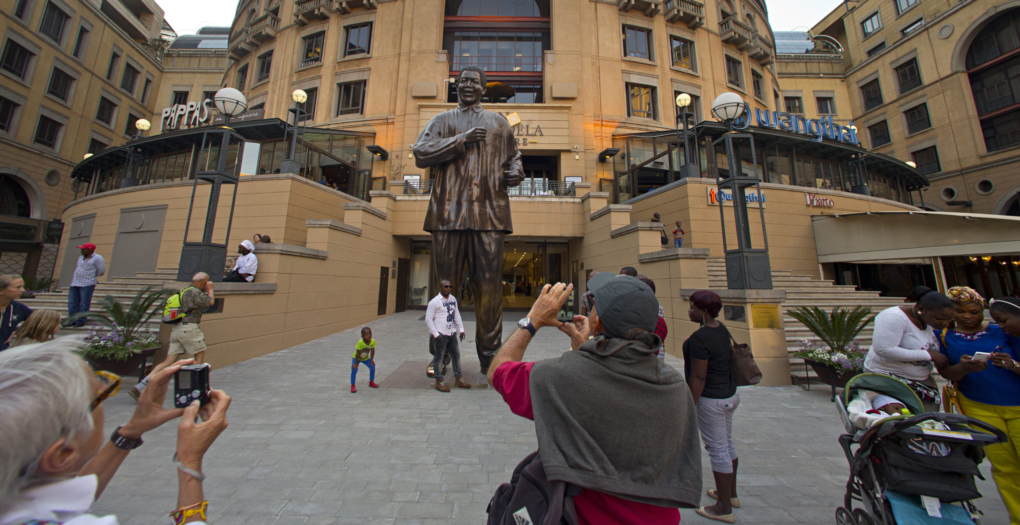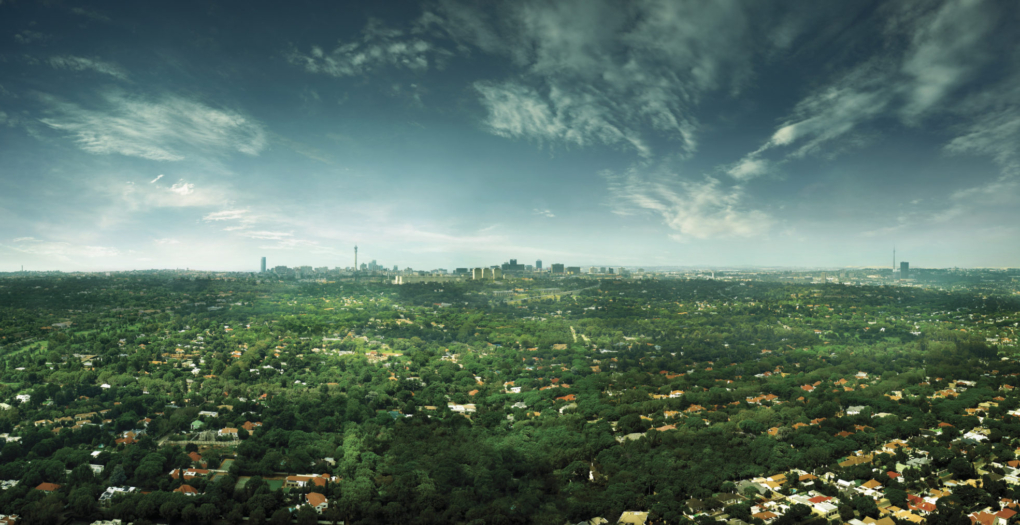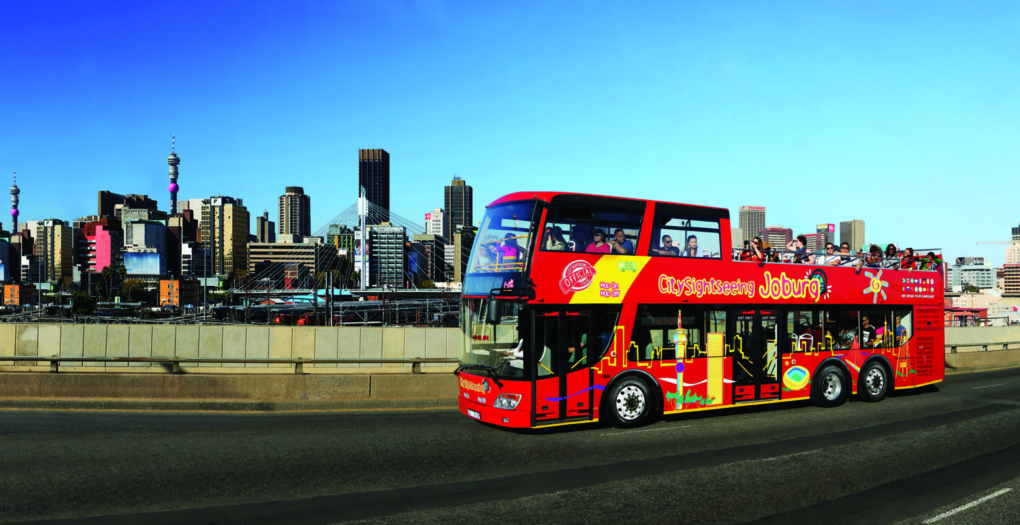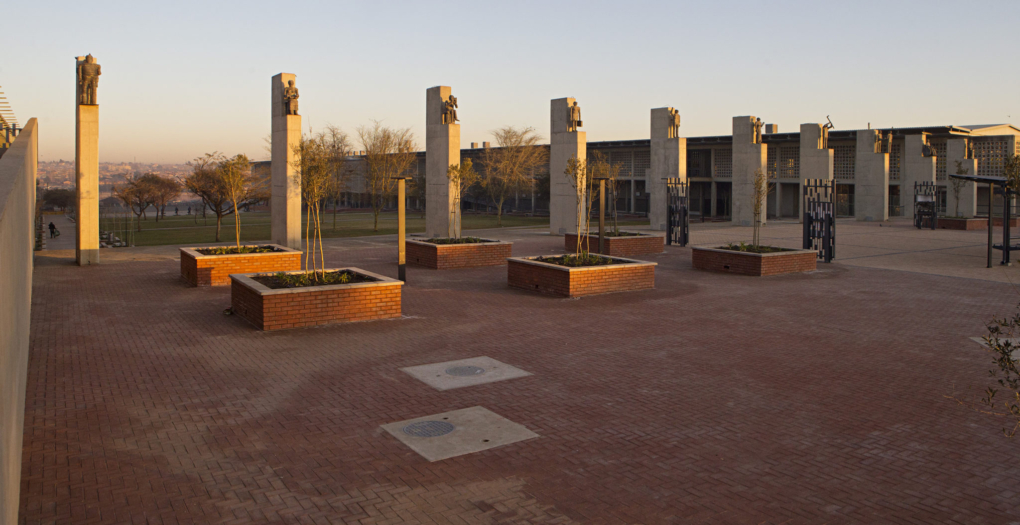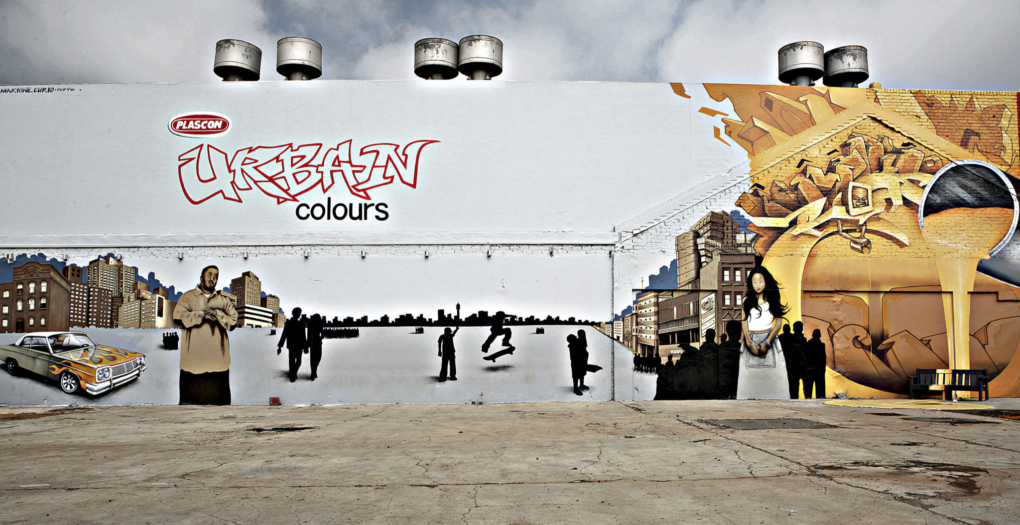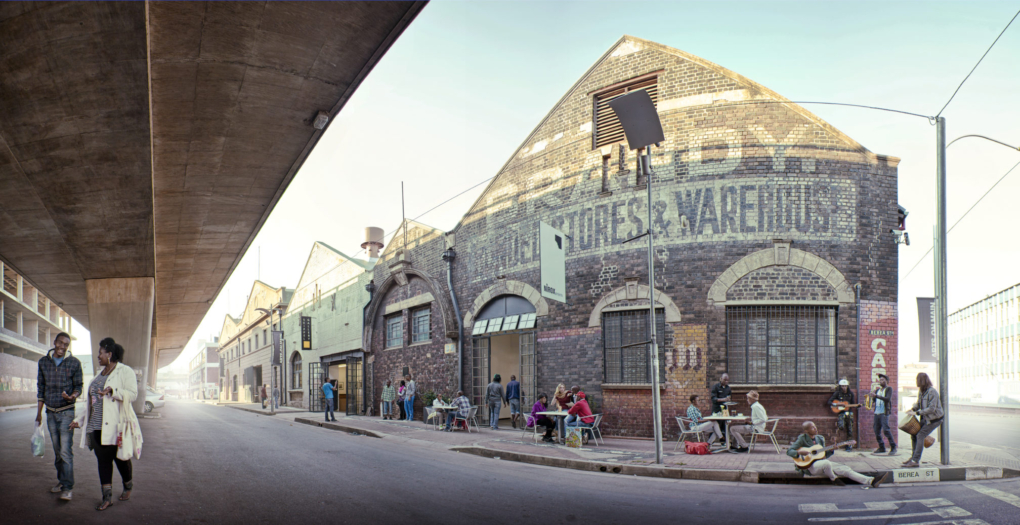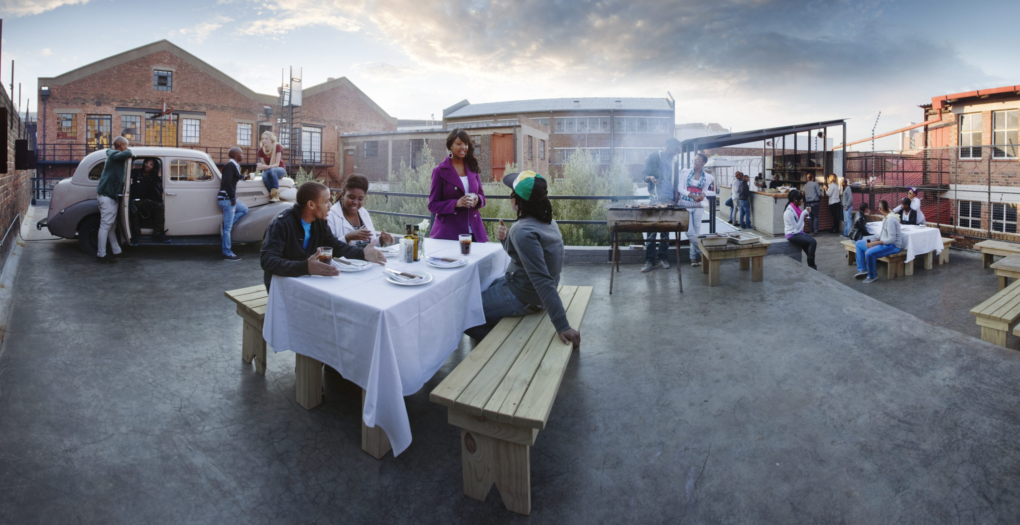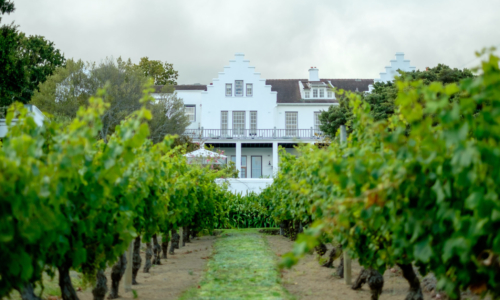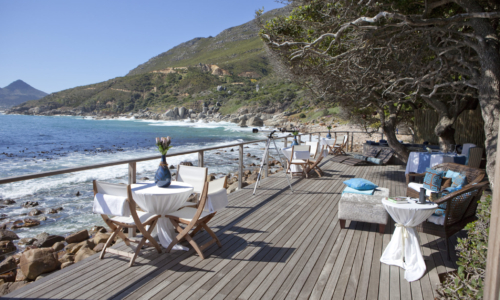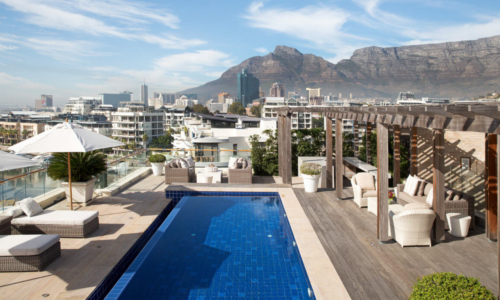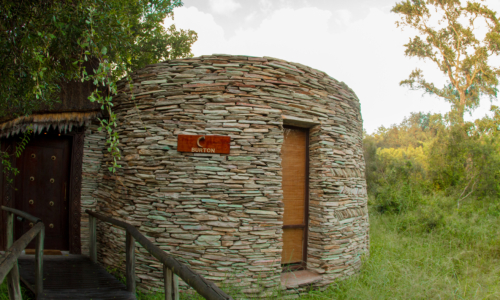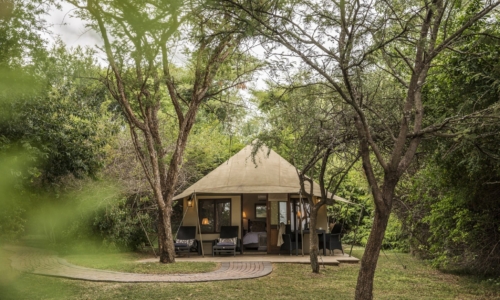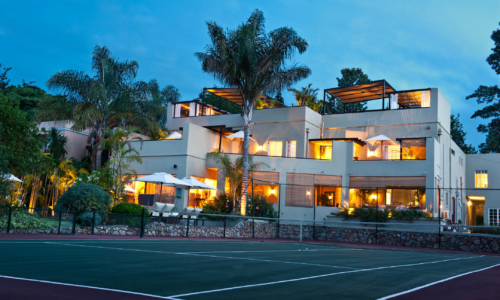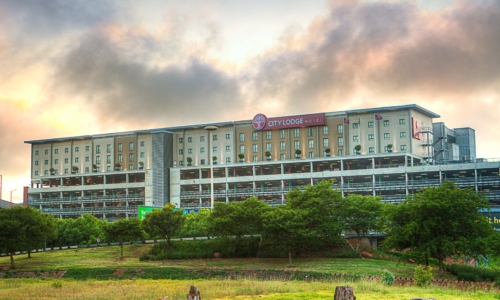Johannesburg, or Jo’burg as it is more affectionately known as, is the largest city in South Africa and the provincial capital of Gauteng. It was founded in 1886 when prospectors found gold in the area then known as Witwatersrand. As thousands flocked to the Langlaagte farm in the savanna, the Boers, Dutch farmers, set up a township and named it after two officials of the Zuid-Afrikaansche Republiek (ZAR); Johannes Meyer and Johannes Rissik. The government changed hands in 1900 when the British captured the city during the Second Boer War, enfolding it into the British Commonwealth.
A city of controversial background, it now works hard to rise above its sordid past when native tribesmen were forced to work in the gold mine and apartheid separated people by color. Today it is a dynamic and multicultural city of four million people. It is also a very green city despite its savanna setting. With around 6 million trees, Johannesburg is probably the world’s largest man-made urban forest.
For a city barely a hundred years old, it’s rich in history and hosts many exciting historical sights to visit. The Maropeng Visitors Center teaches about the Cradle of Human Kind taking visitors on an interactive journey through the evolution of life and human history. For more recent history, the Apartheid Museum tells the story of the rise and fall of South Africa’s era of segregation. In addition to which, inspiring Constitution Hill houses the Constitutional Court, built within the ramparts of the Old Fort, which dates from 1892 and was once a notorious prison that held many of the country’s high-profile political activists, including Nelson Mandela and Mohandas (Mahatma) Gandhi.
Shifting from history to art, Johannesburg Art Gallery houses the largest art collection in Africa. Among the collection are spectacular landscape and figurative paintings from the 17th and 18th Europe, as well as works by leading South Africa artists and traditional African objects. In a gentrified corner of the city, Joziburg Lane occupies the ground floor of One Eloff, a magnificent art deco building which houses artist’s studios and hip restaurants and shops. Many more areas of the city are enjoying an urban renaissance like hipster-friendly Maboneng with its Work and Art Building as well as Bioscope, South Africa’s only independent cinema. Today’s modern city is more than a jumping off place before traversing the safari rich Kruger National Park, it’s a place to stay awhile and explore the past and present of the largest city in South Africa.

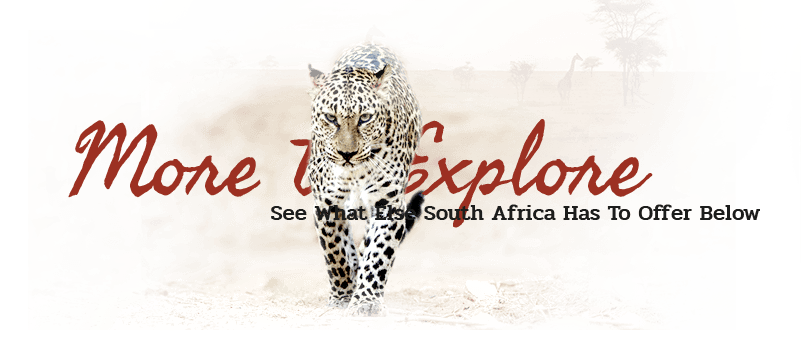
- Africa House
- Arathusa Safari Lodge
- Baobab Hill Bush House
- Boulders Lodge
- Castleton Lodge
- Chitwa Chitwa
- Dulini Leadwood Lodge
- Dulini Lodge
- Dulini River Lodge
- Ebony Lodge
- Ecca Lodge
- Great Fish River Lodge
- Idube Game Reserve
- Ivory Lodge
- Jabulani
- Jackalberry Lodge
- Kambaku River Sands
- Kambaku Safari Lodge
- Kings Camp
- Kirkman’s Kamp
- Lebombo Lodge
- Leopard Hills
- Loapi Tented Camp
- Madikwe Hills
- Madikwe Safari Lodge
- Makanyane Safari Lodge
- MalaMala Main Camp
- MalaMala Sable Camp
- Marataba Mountain Lodge
- Marataba Safari Lodge
- Masiya Camp
- Melote House
- Melton Manor
- Monwana
- Mount Anderson
- Narina Lodge
- Ngala Safari Lodge
- Ngala Tented Camp
- Noka Camp
- Pafuri Camp
- Phinda Forest Lodge
- Phinda Homestead
- Phinda Mountain Lodge
- Phinda Rock Lodge
- Phinda Vlei Lodge
- Phinda Zuka Lodge
- Rattray’s Camp
- River Lodge
- Rocktail Beach Camp
- Royal Malewane
- Sabi Sabi Bush Lodge
- Sabi Sabi Earth Lodge
- Sabi Sabi Little Bush Camp
- Sabi Sabi Selati Camp
- Saseka Tented Camp
- Savanna Lodge
- Simbambili Game Lodge
- Simbavati River Lodge
- Sweni Lodge
- Tanda Tula
- Tengile River Lodge
- The Farmstead at Royal Malewane
- The Outpost
- Thornybush Game Lodge
- Thornybush River Lodge
- Tinga Lodge
- Tintswalo Family Camp
- Tintswalo Manor House
- Tintswalo Safari Lodge
- Tswalu Motse
- Tswalu Tarkuni
- Tuningi
- Uplands Homestead
- Walkers Plains Camp
- Waterbuck Lodge
- Waterbuck Private Camp
- Babylonstoren
- Birkenhead House
- Bushman’s Kloof
- Cape Cadogan Boutique Hotel
- Cape Grace Hotel
- City Lodge O. R. Tambo Airport Hotel
- Delaire Graff Estate
- Ellerman House
- Fairlawns Boutique Hotel
- Four Rosmead
- Franschhoek Country House
- Franschhoek House
- Grootbos Forest Lodge
- Grootbos Garden Lodge
- Grootbos Private Villas
- Hunter’s Country House
- InterContinental O. R. Tambo Airport Hotel
- Kensington Place
- La Clé
- La Residence
- La Residence
- Le Quartier Francais
- Leeu Estates
- Leeu House
- Lekkerwater Beach Lodge
- More Quarters
- Mount Nelson Hotel
- One&Only Hotel Cape Town
- Rovos Rail
- Saxon Hotel
- Schulphoek House
- Southern Sun O. R. Tambo Airport Hotel
- The Capital Mirage
- The Cellars-Hohenort
- The Commodore Hotel
- The One Above
- The Peech Hotel
- The PortsWood Hotel
- The Residence Boutique Hotel
- The Silo Hotel
- The Turbine Boutique Hotel
- Tintswalo at Boulders
- Tintswalo Atlantic
- Tintswalo Waterfall
- Twelve Apostles Hotel
- Victoria & Alfred Hotel
- Welgelegen Boutique Guest House
- Africa House
- Arathusa Safari Lodge
- Baobab Hill Bush House
- Boulders Lodge
- Castleton Lodge
- Chitwa Chitwa
- Dulini Leadwood Lodge
- Dulini Lodge
- Dulini River Lodge
- Ebony Lodge
- Ecca Lodge
- Great Fish River Lodge
- Idube Game Reserve
- Ivory Lodge
- Jabulani
- Jackalberry Lodge
- Kambaku River Sands
- Kambaku Safari Lodge
- Kings Camp
- Kirkman’s Kamp
- Lebombo Lodge
- Leopard Hills
- Loapi Tented Camp
- Madikwe Hills
- Madikwe Safari Lodge
- Makanyane Safari Lodge
- MalaMala Main Camp
- MalaMala Sable Camp
- Marataba Mountain Lodge
- Marataba Safari Lodge
- Masiya Camp
- Melote House
- Melton Manor
- Monwana
- Mount Anderson
- Narina Lodge
- Ngala Safari Lodge
- Ngala Tented Camp
- Noka Camp
- Pafuri Camp
- Phinda Forest Lodge
- Phinda Homestead
- Phinda Mountain Lodge
- Phinda Rock Lodge
- Phinda Vlei Lodge
- Phinda Zuka Lodge
- Rattray’s Camp
- River Lodge
- Rocktail Beach Camp
- Royal Malewane
- Sabi Sabi Bush Lodge
- Sabi Sabi Earth Lodge
- Sabi Sabi Little Bush Camp
- Sabi Sabi Selati Camp
- Saseka Tented Camp
- Savanna Lodge
- Simbambili Game Lodge
- Simbavati River Lodge
- Sweni Lodge
- Tanda Tula
- Tengile River Lodge
- The Farmstead at Royal Malewane
- The Outpost
- Thornybush Game Lodge
- Thornybush River Lodge
- Tinga Lodge
- Tintswalo Family Camp
- Tintswalo Manor House
- Tintswalo Safari Lodge
- Tswalu Motse
- Tswalu Tarkuni
- Tuningi
- Uplands Homestead
- Walkers Plains Camp
- Waterbuck Lodge
- Waterbuck Private Camp
- Babylonstoren
- Birkenhead House
- Bushman’s Kloof
- Cape Cadogan Boutique Hotel
- Cape Grace Hotel
- City Lodge O. R. Tambo Airport Hotel
- Delaire Graff Estate
- Ellerman House
- Fairlawns Boutique Hotel
- Four Rosmead
- Franschhoek Country House
- Franschhoek House
- Grootbos Forest Lodge
- Grootbos Garden Lodge
- Grootbos Private Villas
- Hunter’s Country House
- InterContinental O. R. Tambo Airport Hotel
- Kensington Place
- La Clé
- La Residence
- La Residence
- Le Quartier Francais
- Leeu Estates
- Leeu House
- Lekkerwater Beach Lodge
- More Quarters
- Mount Nelson Hotel
- One&Only Hotel Cape Town
- Rovos Rail
- Saxon Hotel
- Schulphoek House
- Southern Sun O. R. Tambo Airport Hotel
- The Capital Mirage
- The Cellars-Hohenort
- The Commodore Hotel
- The One Above
- The Peech Hotel
- The PortsWood Hotel
- The Residence Boutique Hotel
- The Silo Hotel
- The Turbine Boutique Hotel
- Tintswalo at Boulders
- Tintswalo Atlantic
- Tintswalo Waterfall
- Twelve Apostles Hotel
- Victoria & Alfred Hotel
- Welgelegen Boutique Guest House

Johannesburg, or Jo’burg as it is more affectionately known as, is the largest city in South Africa and the provincial capital of Gauteng. It was founded in 1886 when prospectors found gold in the area then known as Witwatersrand. As thousands flocked to the Langlaagte farm in the savanna, the Boers, Dutch farmers, set up a township and named it after two officials of the Zuid-Afrikaansche Republiek (ZAR); Johannes Meyer and Johannes Rissik. The government changed hands in 1900 when the British captured the city during the Second Boer War, enfolding it into the British Commonwealth.
A city of controversial background, it now works hard to rise above its sordid past when native tribesmen were forced to work in the gold mine and apartheid separated people by color. Today it is a dynamic and multicultural city of four million people. It is also a very green city despite its savanna setting. With around 6 million trees, Johannesburg is probably the world’s largest man-made urban forest.
For a city barely a hundred years old, it’s rich in history and hosts many exciting historical sights to visit. The Maropeng Visitors Center teaches about the Cradle of Human Kind taking visitors on an interactive journey through the evolution of life and human history. For more recent history, the Apartheid Museum tells the story of the rise and fall of South Africa’s era of segregation. In addition to which, inspiring Constitution Hill houses the Constitutional Court, built within the ramparts of the Old Fort, which dates from 1892 and was once a notorious prison that held many of the country’s high-profile political activists, including Nelson Mandela and Mohandas (Mahatma) Gandhi.
Shifting from history to art, Johannesburg Art Gallery houses the largest art collection in Africa. Among the collection are spectacular landscape and figurative paintings from the 17th and 18th Europe, as well as works by leading South Africa artists and traditional African objects. In a gentrified corner of the city, Joziburg Lane occupies the ground floor of One Eloff, a magnificent art deco building which houses artist’s studios and hip restaurants and shops. Many more areas of the city are enjoying an urban renaissance like hipster-friendly Maboneng with its Work and Art Building as well as Bioscope, South Africa’s only independent cinema. Today’s modern city is more than a jumping off place before traversing the safari rich Kruger National Park, it’s a place to stay awhile and explore the past and present of the largest city in South Africa.

- Africa House
- Arathusa Safari Lodge
- Baobab Hill Bush House
- Boulders Lodge
- Castleton Lodge
- Chitwa Chitwa
- Dulini Leadwood Lodge
- Dulini Lodge
- Dulini River Lodge
- Ebony Lodge
- Ecca Lodge
- Great Fish River Lodge
- Idube Game Reserve
- Ivory Lodge
- Jabulani
- Jackalberry Lodge
- Kambaku River Sands
- Kambaku Safari Lodge
- Kings Camp
- Kirkman’s Kamp
- Lebombo Lodge
- Leopard Hills
- Loapi Tented Camp
- Madikwe Hills
- Madikwe Safari Lodge
- Makanyane Safari Lodge
- MalaMala Main Camp
- MalaMala Sable Camp
- Marataba Mountain Lodge
- Marataba Safari Lodge
- Masiya Camp
- Melote House
- Melton Manor
- Monwana
- Mount Anderson
- Narina Lodge
- Ngala Safari Lodge
- Ngala Tented Camp
- Noka Camp
- Pafuri Camp
- Phinda Forest Lodge
- Phinda Homestead
- Phinda Mountain Lodge
- Phinda Rock Lodge
- Phinda Vlei Lodge
- Phinda Zuka Lodge
- Rattray’s Camp
- River Lodge
- Rocktail Beach Camp
- Royal Malewane
- Sabi Sabi Bush Lodge
- Sabi Sabi Earth Lodge
- Sabi Sabi Little Bush Camp
- Sabi Sabi Selati Camp
- Saseka Tented Camp
- Savanna Lodge
- Simbambili Game Lodge
- Simbavati River Lodge
- Sweni Lodge
- Tanda Tula
- Tengile River Lodge
- The Farmstead at Royal Malewane
- The Outpost
- Thornybush Game Lodge
- Thornybush River Lodge
- Tinga Lodge
- Tintswalo Family Camp
- Tintswalo Manor House
- Tintswalo Safari Lodge
- Tswalu Motse
- Tswalu Tarkuni
- Tuningi
- Uplands Homestead
- Walkers Plains Camp
- Waterbuck Lodge
- Waterbuck Private Camp
- Babylonstoren
- Birkenhead House
- Bushman’s Kloof
- Cape Cadogan Boutique Hotel
- Cape Grace Hotel
- City Lodge O. R. Tambo Airport Hotel
- Delaire Graff Estate
- Ellerman House
- Fairlawns Boutique Hotel
- Four Rosmead
- Franschhoek Country House
- Franschhoek House
- Grootbos Forest Lodge
- Grootbos Garden Lodge
- Grootbos Private Villas
- Hunter’s Country House
- InterContinental O. R. Tambo Airport Hotel
- Kensington Place
- La Clé
- La Residence
- La Residence
- Le Quartier Francais
- Leeu Estates
- Leeu House
- Lekkerwater Beach Lodge
- More Quarters
- Mount Nelson Hotel
- One&Only Hotel Cape Town
- Rovos Rail
- Saxon Hotel
- Schulphoek House
- Southern Sun O. R. Tambo Airport Hotel
- The Capital Mirage
- The Cellars-Hohenort
- The Commodore Hotel
- The One Above
- The Peech Hotel
- The PortsWood Hotel
- The Residence Boutique Hotel
- The Silo Hotel
- The Turbine Boutique Hotel
- Tintswalo at Boulders
- Tintswalo Atlantic
- Tintswalo Waterfall
- Twelve Apostles Hotel
- Victoria & Alfred Hotel
- Welgelegen Boutique Guest House
- Africa House
- Arathusa Safari Lodge
- Baobab Hill Bush House
- Boulders Lodge
- Castleton Lodge
- Chitwa Chitwa
- Dulini Leadwood Lodge
- Dulini Lodge
- Dulini River Lodge
- Ebony Lodge
- Ecca Lodge
- Great Fish River Lodge
- Idube Game Reserve
- Ivory Lodge
- Jabulani
- Jackalberry Lodge
- Kambaku River Sands
- Kambaku Safari Lodge
- Kings Camp
- Kirkman’s Kamp
- Lebombo Lodge
- Leopard Hills
- Loapi Tented Camp
- Madikwe Hills
- Madikwe Safari Lodge
- Makanyane Safari Lodge
- MalaMala Main Camp
- MalaMala Sable Camp
- Marataba Mountain Lodge
- Marataba Safari Lodge
- Masiya Camp
- Melote House
- Melton Manor
- Monwana
- Mount Anderson
- Narina Lodge
- Ngala Safari Lodge
- Ngala Tented Camp
- Noka Camp
- Pafuri Camp
- Phinda Forest Lodge
- Phinda Homestead
- Phinda Mountain Lodge
- Phinda Rock Lodge
- Phinda Vlei Lodge
- Phinda Zuka Lodge
- Rattray’s Camp
- River Lodge
- Rocktail Beach Camp
- Royal Malewane
- Sabi Sabi Bush Lodge
- Sabi Sabi Earth Lodge
- Sabi Sabi Little Bush Camp
- Sabi Sabi Selati Camp
- Saseka Tented Camp
- Savanna Lodge
- Simbambili Game Lodge
- Simbavati River Lodge
- Sweni Lodge
- Tanda Tula
- Tengile River Lodge
- The Farmstead at Royal Malewane
- The Outpost
- Thornybush Game Lodge
- Thornybush River Lodge
- Tinga Lodge
- Tintswalo Family Camp
- Tintswalo Manor House
- Tintswalo Safari Lodge
- Tswalu Motse
- Tswalu Tarkuni
- Tuningi
- Uplands Homestead
- Walkers Plains Camp
- Waterbuck Lodge
- Waterbuck Private Camp
- Babylonstoren
- Birkenhead House
- Bushman’s Kloof
- Cape Cadogan Boutique Hotel
- Cape Grace Hotel
- City Lodge O. R. Tambo Airport Hotel
- Delaire Graff Estate
- Ellerman House
- Fairlawns Boutique Hotel
- Four Rosmead
- Franschhoek Country House
- Franschhoek House
- Grootbos Forest Lodge
- Grootbos Garden Lodge
- Grootbos Private Villas
- Hunter’s Country House
- InterContinental O. R. Tambo Airport Hotel
- Kensington Place
- La Clé
- La Residence
- La Residence
- Le Quartier Francais
- Leeu Estates
- Leeu House
- Lekkerwater Beach Lodge
- More Quarters
- Mount Nelson Hotel
- One&Only Hotel Cape Town
- Rovos Rail
- Saxon Hotel
- Schulphoek House
- Southern Sun O. R. Tambo Airport Hotel
- The Capital Mirage
- The Cellars-Hohenort
- The Commodore Hotel
- The One Above
- The Peech Hotel
- The PortsWood Hotel
- The Residence Boutique Hotel
- The Silo Hotel
- The Turbine Boutique Hotel
- Tintswalo at Boulders
- Tintswalo Atlantic
- Tintswalo Waterfall
- Twelve Apostles Hotel
- Victoria & Alfred Hotel
- Welgelegen Boutique Guest House

